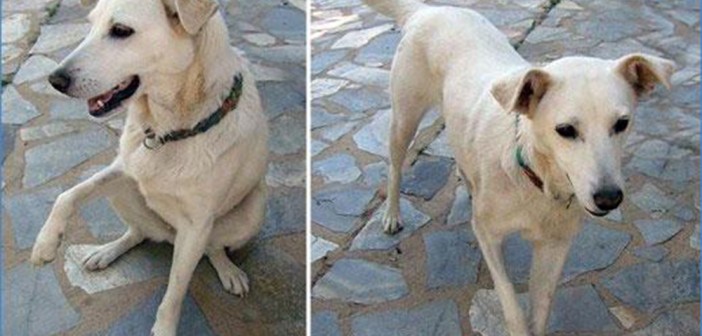Evaluating limping dogs is a daily part of life in a veterinary hospital. One of the most common causes of rear leg lameness is rupture of the stifle’s (knee’s) cranial cruciate ligament (CrCL). Also a common injury in people (known as an ACL tear), in dogs, the tear is most often the result of slow degeneration of the ligament rather than the result of sudden trauma. Because of this difference, surgical replacement of the ligament is not a successful treatment option. This has led to the development of multiple surgical techniques to correct the resultant joint instability. Consultation with a veterinarian, including physical examination and x-rays, can help select the best option for each individual pet.
Surgical Options
Extracapsular suture stabilization – There are many variations of this popular technique, but the goal is to mimic the function of the ruptured CrCL by placing a suture outside the knee joint, in a similar orientation to the original ligament. This technique works best in smaller breeds and inactive dogs.
Tightrope – This variation of extracapsular repair uses a specifically developed suture and implant combination for more accurate placement of the implant and better suture strength.
Tibial Plateau Leveling Osteotomy (TPLO) – TPLO involves making a circular cut in the shin bone and rotating its joint surface to a near level orientation. This renders the knee more stable without the need for the CrCL. The cut in the bone is stabilized with a plate and screws. This procedure is preferred for young, active, and larger dogs.
Tibial Tuberosity Advancement (TTA) – TTA is another way to accomplish the same mechanical advantage obtained with TPLO but uses a linear cut along the front of the shin bone. This cut is also stabilized with a plate and screws. The choice between TPLO and TTA is often based on surgeon preference. There is no current data to suggest that one is better than the other.
The cost of these procedures varies amongst veterinary hospitals, depending on the degree of anesthetic monitoring, level of surgeon training, cost of supplies used, and amount of post-operative care. CrCL surgery commonly costs $2500 to $3500.
The earlier surgery is performed, the more effective it is. Ample evidence shows that rehabilitation therapy by a trained practitioner can also improve recovery from surgery.
Postoperative care at home is critical for success with any surgery. In general, dogs need exercise restricted for eight to 12 weeks following the procedure. Exercise is usually limited to leash walks of gradually increasing distance. Pets should not be allowed off leash until four months after surgery. With techniques involving bone cuts and hardware placement, x-rays are taken six to eight weeks after surgery to confirm healing. Most pets can resume normal activities within four to six months. Oral anti-inflammatory medications are needed for several weeks.
Non-Surgical Options
Non-surgical options are generally not advised as the ideal form of treatment, but may be appropriate for certain individuals due to small size, inactive lifestyle, the presence of other diseases, or financial limitations.
Weight loss, activity restriction, and anti-inflammatory medications will not stabilize the knee, but — over time — the symptoms of pain and lameness may subside. However, return to normal activity levels will often be limited by the progression of arthritis in the knee joint.
No evidence suggests that physical therapy alone is a reliable replacement for surgical repair. Physical rehabilitation services include therapeutic exercises, therapeutic ultrasound, laser therapy, and massage therapy. Some veterinarians specialize in these techniques and can customize a plan for each pet.
Custom knee bracing is relatively new to canine orthopedics, and there is little scientific data on the topic. While a popular concept in humans with ACL injuries, the mechanics of the canine and human knee are very different, so treatment comparisons are unwise.
Long-Term Prognosis
The long-term prognosis for dogs undergoing surgical repair of a ruptured CrCL is good, with reports of significant improvement in 85-90 percent of cases. Arthritis can develop regardless of treatment type, but it is expected to be slower with surgery. It is also important to note that half of dogs will experience the same injury in their opposite leg in the future.
***
Any lameness warrants evaluation by your veterinarian. If your canine companion develops an abnormal gait or has trouble using a limb, your veterinarian is ready to assist with diagnosis and treatment.
Rachel Walton received her Doctor of Veterinary Medicine from Colorado State University in 2007. She is an associate veterinarian at University Veterinary Hospital & Diagnostic Center in Salt Lake City.




